When Ecovacs asked us to put their Deebot N79S robot vacuum cleaner to the test, we thought it would certainly be interesting to talk about it, since we never went beyond reporting new products at launch for this company.
On the other hand, the price is good and precisely on the basis of this, if it had been able to impress us positively from the point of view of cleanliness, it would certainly have given a hard time to many other competing products. And this is where the light bulb went on: why just try it? Couldn't we instead compare it with one of those produced by one of the best known companies in the world in this sector?
The result of these thoughts is the article you are about to read: a direct comparison of Ecovacs Deebot N79S with iRobot Roomba 615, not the best in production (it is a model of a few years ago close to phase out) but certainly the one that the closer it is to the price range in which the Ecovacs solution is positioned (at the time of writing there is a difference of 50 euros to the advantage of the latter).
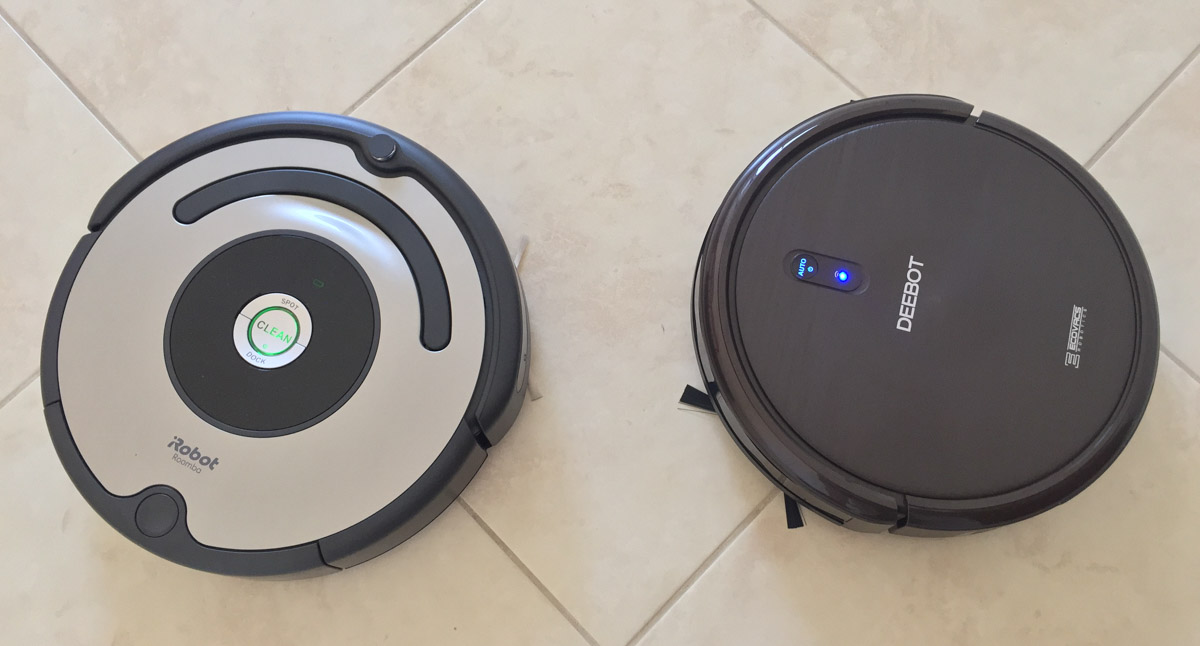
Accessories in pack: 1 to 0 for Ecovacs
There were no surprises when the Ecovacs Deebot N79S was unpacked. This vacuum cleaner, like many others that this reporter has tried and reviewed in the past, is sold together with a series of accessories that we consider essential for its most comfortable use.
Unboxing Ecovacs Deebot N79S In fact, in the box there is, in addition to the vacuum cleaner (already attached to the relative dirt collection tray), the charging base to be placed next to the wall to ensure that, when the battery level drops to a critical level, the robot is then able to reach it and self-reload to be immediately ready for the next cleaning cycle.
In addition to this and the user manual, a multi-function tool is included that is very useful for the maintenance of the robot: it combines a small comb that allows you to remove the most stubborn dirt from the central brush, a small cutter to remove any residual hair stuck between the various parts and a brush with soft bristles to remove the dust from the wheels and corners of the tray after it is emptied.
Obviously, there is also the remote control (with batteries included), which is essential for controlling it remotely or programming its start.
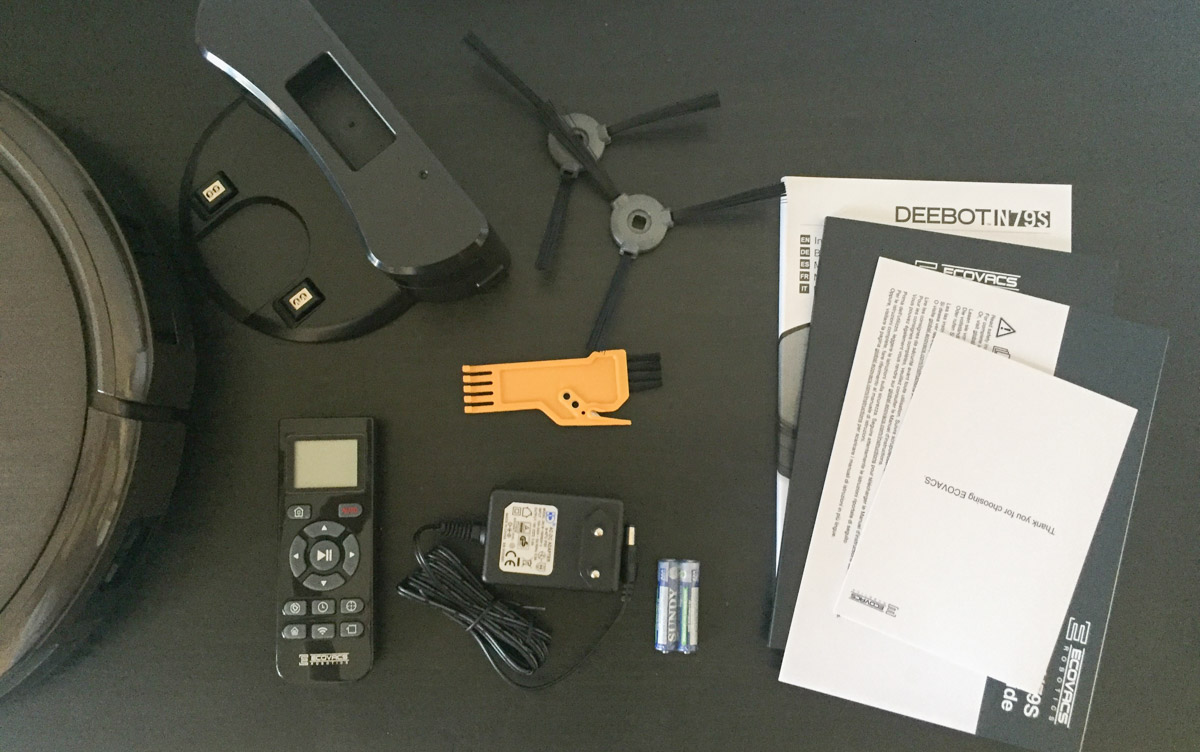
Unboxing iRobot Roomba 615 On the other hand, the equipment of the Roomba 615 is different. In fact, in the box, in addition to the vacuum cleaner, the charging base and the user manual, there is nothing else. If you can let go about the absence of a maintenance tool (in the end you can equip yourself with a brush, a cutter and a small hair comb) it is more difficult to accept that this vacuum cleaner is not controllable by a remote control. .
Start-up and operating mode can only be managed by pressing the single, large central button recessed on the surface of the vacuum cleaner. So every time you have to start it or bend over or stretch the thumb of the foot. There are no other alternatives.
Construction: iRobot is one step above, 1 to 1 and ball in the center
Not that Ecovacs is badly built, mind you: the polycarbonate used appears very sturdy, the upper surface is covered with a thick layer of glass which also gives it a premium appearance (and makes it easier to clean since it is an area where a lot of deposits are deposited. dust). And then the mechanics are solid, well-designed wheels and brushes, in short, if you compare it with one of the other robots tried in the past there are no big differences in positive or negative. However, placed close to the Roomba of this comparison, all the differences emerge.
Not only are the lines more modern and overall more pleasing to the eye (but this is subjective), but the construction and engineering behind them are generally better.
For example, in the center there are two brushes instead of one. They work in symbiosis and apparently seem to work more effectively. The front one is made entirely of rubber and promises a deep cleaning of the floor thanks to the large bristles in soft silicone. The immediately rear one instead collects the dirt that escapes the first by rotating in the opposite direction and together they channel it into the waste collection tray. Compared to the one we find on the Ecovacs, it is characterized by a greater number of bristles, much softer and well thinned out.
The wheels are also larger and slightly higher, so it should be able to overcome carpets and other obstacles more easily. And then the sensors are wider and therefore easier to clean (in addition to the fact that they should guarantee better control of movements).
But most of all, the dirt collection tray appears to have been built to perfection. The Ecovacs one is no different from the others: there is a large compartment in which the dust ends and, on the upper side, a removable filter. The Roomba 615 tray is instead characterized by a filtering system in our best opinion because, in addition to being larger (and therefore has the ability to collect a greater amount of dirt), it is positioned at the mouth of the breather from which it is launched the dust collected by the robot. From here, thanks to a fan, the dirt is sorted: the finest dust is retained by the filter while the rest is sent to the largest drawer.
1 of 13 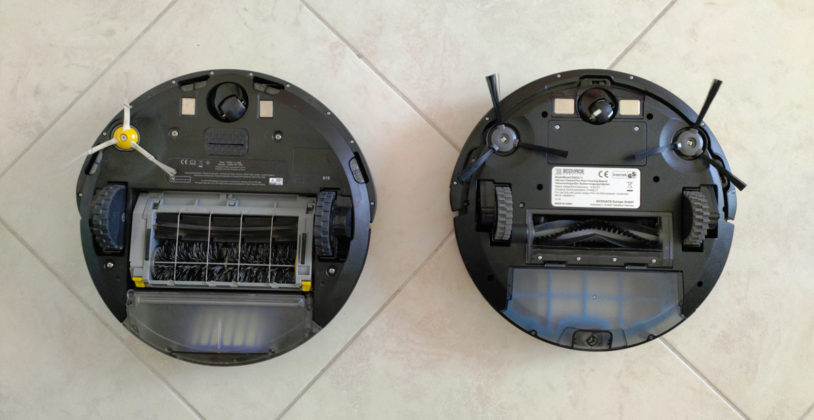 Roomba on the left, Ecovacs on the right
Roomba on the left, Ecovacs on the right  the single brush of the Roomba
the single brush of the Roomba 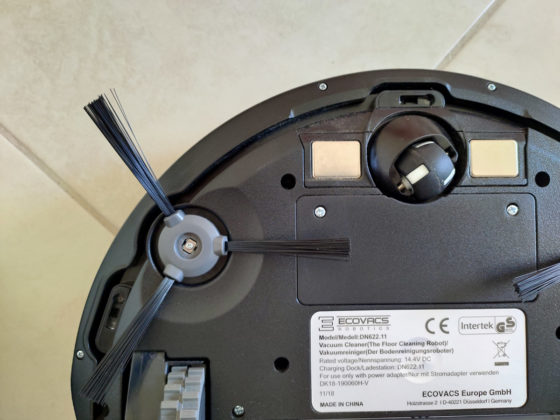 the two brushes of the Ecovacs
the two brushes of the Ecovacs 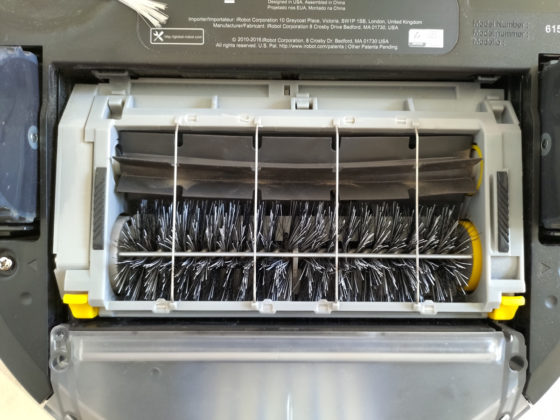 The central brushes of the Roomba
The central brushes of the Roomba  Let's take a closer look at the central brushes of the Roomba
Let's take a closer look at the central brushes of the Roomba 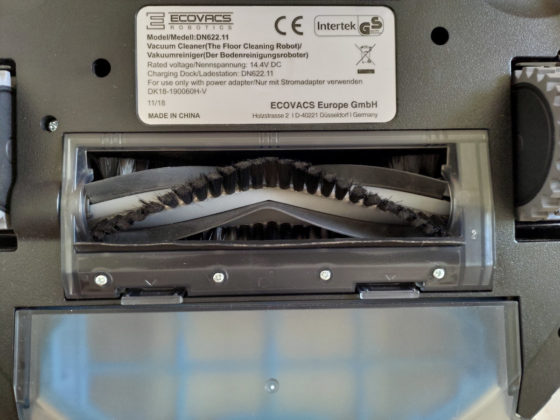 the Ecovacs brush
the Ecovacs brush 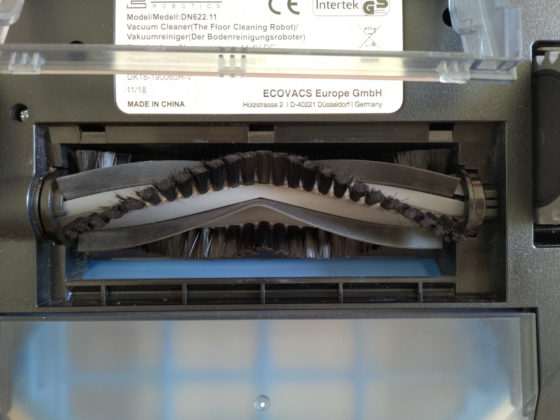 The ecovacs brush closer view
The ecovacs brush closer view 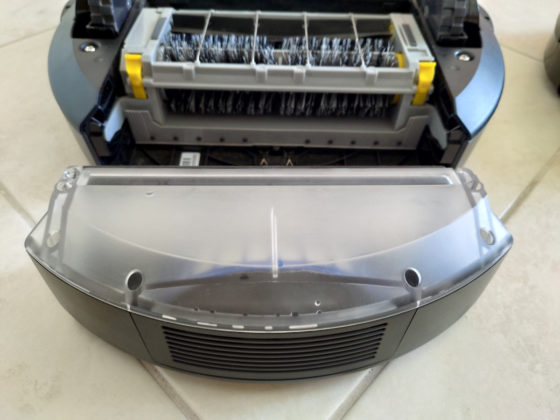 Roomba's waste collection tray
Roomba's waste collection tray 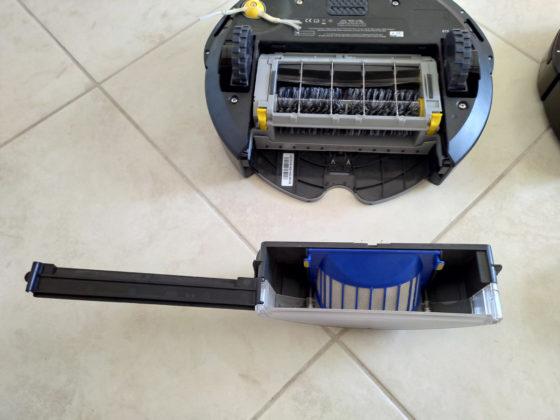 Roomba's filter system
Roomba's filter system 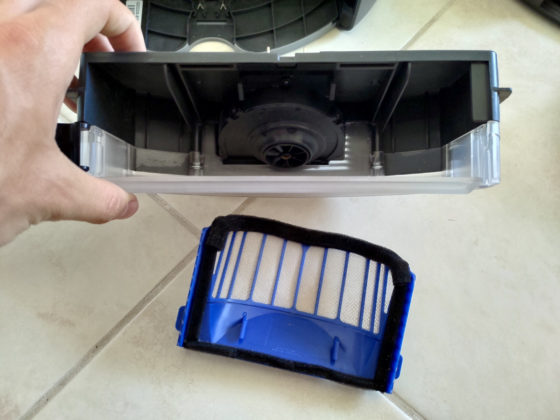 The internal fan in the Roomba tray
The internal fan in the Roomba tray 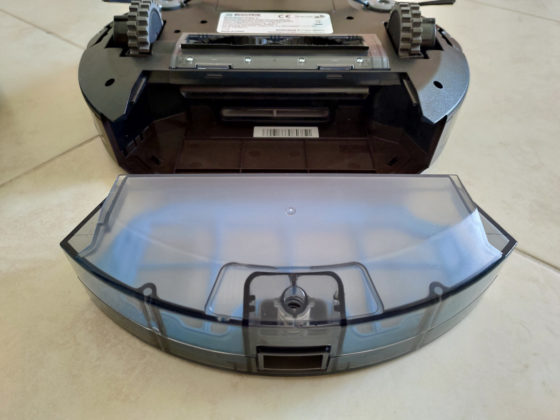 The drip tray Ecovacs waste
The drip tray Ecovacs waste 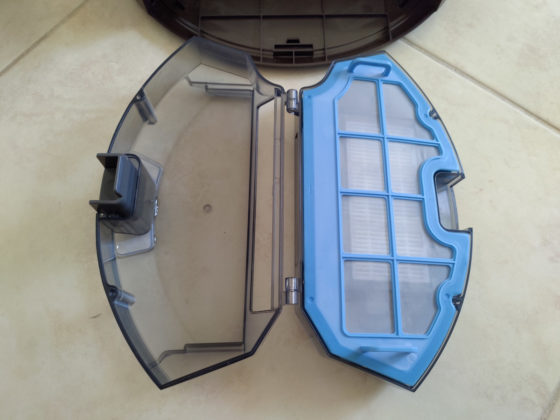 Seen inside
Seen inside  The filter system
The filter system
Field test: the victory? It is not discounted
Having said that, let's get to the heart of the matter. Who cleans best? To understand this, we had almost a month, enough to carry out different tests and at the same time keep his wife's mood high, who, for three full weeks, was able to hang up the broom. Honestly, it wasn't easy: the risk of hastening a wrong judgment is always around the corner.
In fact, if you limit yourself to deliberately dirtying a small area of the floor perhaps with confetti or sugar, then apart from the playful aspect of the thing you will certainly be able to sum up and say who-is-better-than-who. We did it and the judgment is positive for both of us: no one leaves even half coriander behind and as far as sugar is concerned, two passes are enough to remove it even in areas where it accumulates in greater quantities. We are 2 to 2.
But the test, the real one, you will certainly agree with us, is in everyday use. That is, when the vacuum cleaner is started to sweep the floor and ensure that, at the end, not even a speck of dust remains. And here the matter becomes complex, because the floor does not get dirty in the same way every day. In other words, there are days that a greater amount of dust accumulates on the floor or goes to settle in different areas.
Then the house is not lived in the same way. One day you can spend more time in the kitchen, another day in the living room. So splitting the robots into two different sectors wouldn't make sense. For this reason we have given ourselves a time: one week each, from Monday to Sunday, we take notes for each one and then we sum up.
Well, in this context, one is superior to the other. We are at 3 to 2, and it is a definitive result because the difference between one and the other is clear and merciless.
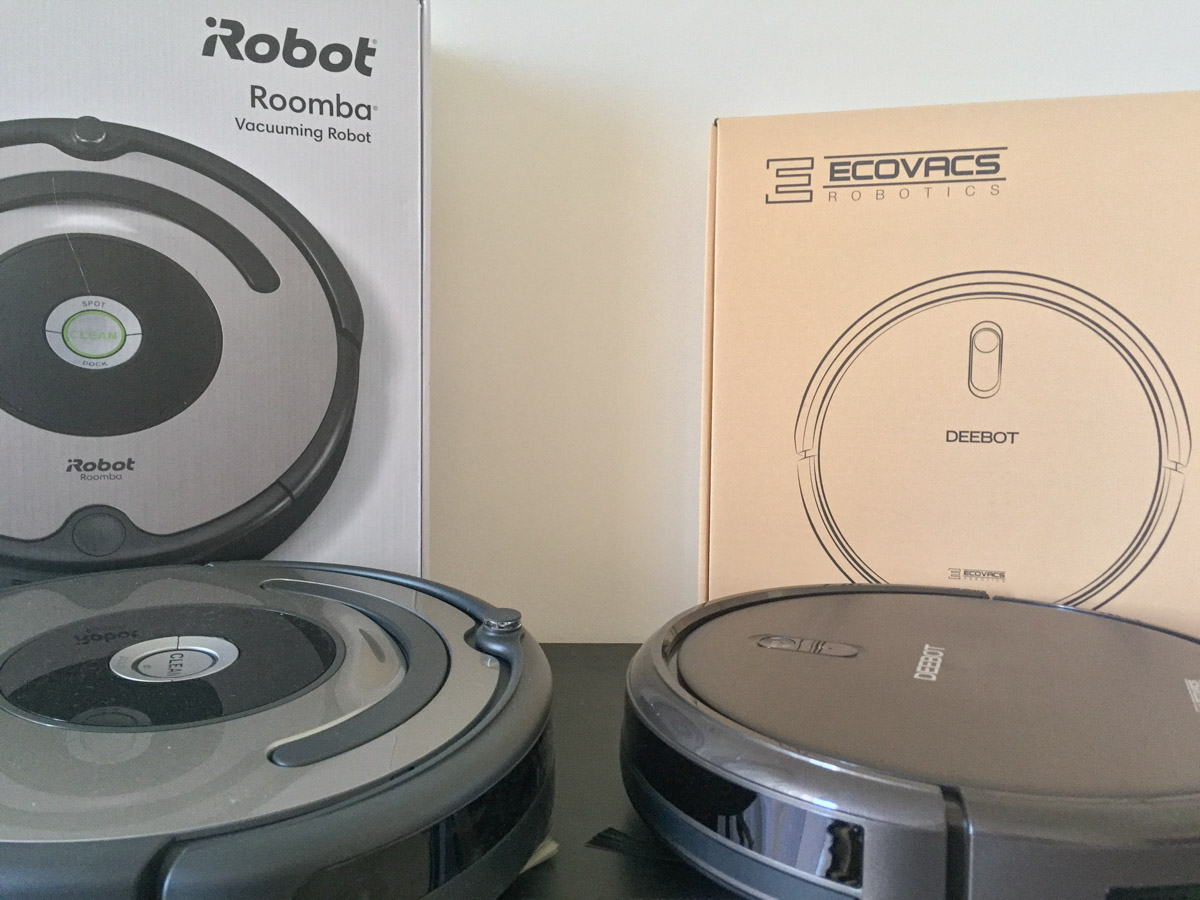
Here's who wins and why
Contrary to our expectations, also conditioned by the fame of iRobot in this sector, the victory goes to the Ecovacs Deebot N79S. And we give it to him for more than one reason.
First and foremost, most importantly, cleaning is better overall. It reaches all corners and leaves no dust wads around the house. He has no problems in recognizing chairs, table legs and low furniture as well as not struggling to climb over carpets. It also has its “intelligence” which allows it to increase the suction power when it passes through particularly dirty areas. In short, when you return home he will be in his charging station and the floor will be free of dust.
On the other hand, the cases in which the Roomba 615 left us with a bad taste in the mouth, forgetting entire areas or worse, ignoring the dust that was along the baseboard of some rooms, were not rare. We wondered why such a thing could happen and the only difference between the two that we can consider the main cause of this less cleaning is in the presence of a single rotating brush.
iRobot Roomba 615 has one, in the right corner, while the Ecovacs Deebot N79S as well as others of this type uses two, one for each side. And in fact, it is not uncommon to see the Roomba activate the “perimeter” mode by walking along it on the left side, that is, letting the brush rotate on the opposite side to the one it should have swept instead (and this is why some perimeters turned out to be completely dirty after cleaning).
Because otherwise, both robots gave us the impression of having the same level of AI: neither of them maps the room, so they move at random and change direction every time one of the sensors encounters an obstacle. The reason why the Roomba leaves dead zones could be motivated here by the presence of only one brush. The Ecovacs in fact uses two that rotate towards the center and direct a greater quantity of dirt in the center, towards the waste collection tray, while the Roomba in crossing the same floor can rely on a single brush that sometimes throws dirt and dust on the other side without having an opposite ally who can recover it in time.
Also, it must be said, the iRobot Roomba 615 is really loud. We are at the levels of a traditional vacuum cleaner and at the moment it is the one that disturbs the most if you also compare it to the other robots tested in the past or to the Ecovacs of this test, which instead keeps its noise level low and constant (although the cards techniques say anything else: 67 dB for Ecovacs and 61 dB for the Roomba. Clearly we are faced with values that are not exactly precise that we cannot verify with professional instruments but there is no doubt of our ears, we are still quite young) .
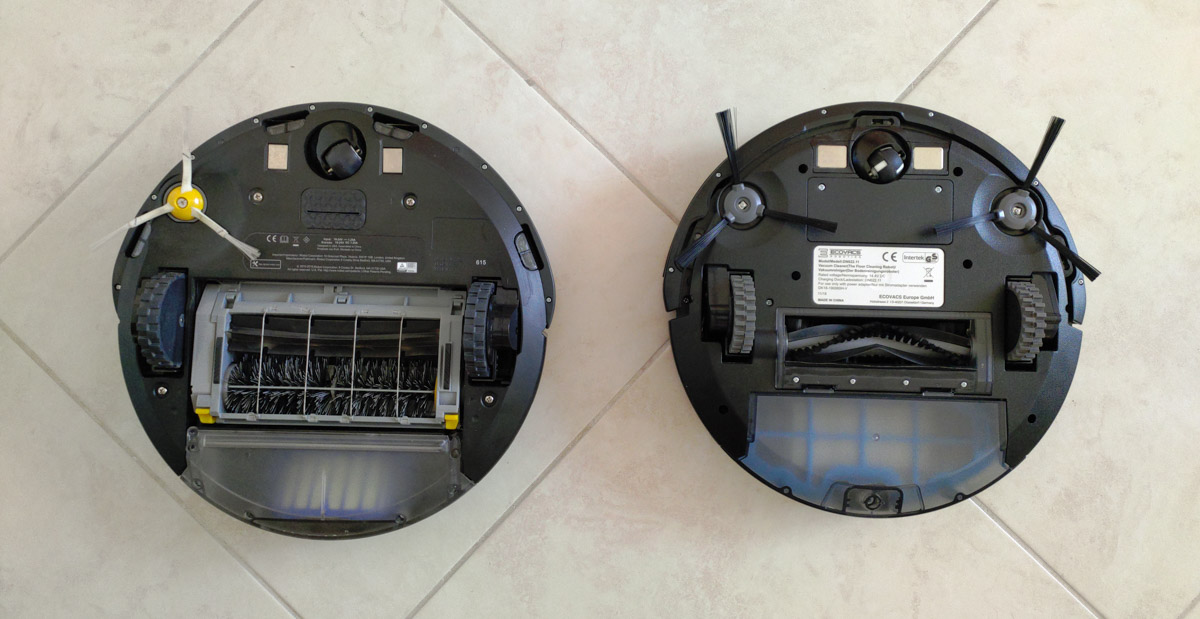 Roomba on the left, Ecovacs on the right
Roomba on the left, Ecovacs on the right
And the functions? There is no story here
The quality of cleaning is already sufficient to decree the winner of this comparison but we cannot omit the capabilities of each of the two models in the face of this clear difference that is found in their use.
If we were to continue with the example of the game then this would be a 4 to 2 that definitively closes all hope of recovery. The Roomba lacks a remote to control, as we have already mentioned, but it is also limited in its capabilities. In fact, you can press the Auto button to start automatic cleaning, the Spot button to sweep an area with a spiral movement for a diameter of about one meter, or and press the Dock key to send it back to the base. End. This also means that to move it it will have to be lifted with your hands and if you do not clean it daily it will be like taking a ball of dust.
Ecovacs Deebot N79S, like others in this category, promises and does much more. In fact, from the remote control it is possible to set the current time and program it to start every day and at a specific time of day: this means making sure that it cleans the house even when we are in the office – or better still on vacation – in case we have forgot to turn it on before going out.
Here too there are the Auto and Spot modes, but there are also two others dedicated respectively to cleaning the perimeter of the house and a single room. And then there is the WiFi which, through the Ecovacs Home app, allows you to control all its functions (and check the battery charge level) directly from the phone and without having to search for the remote control.
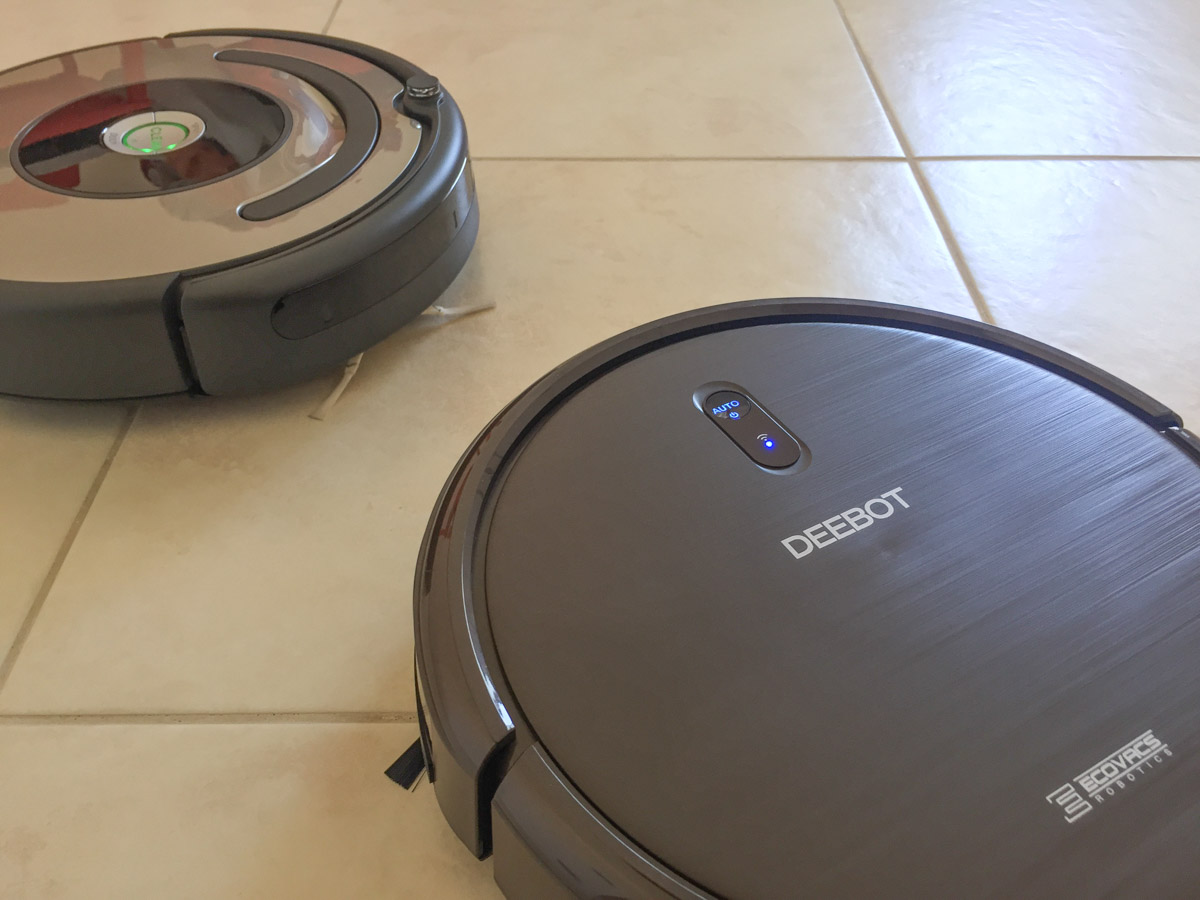
Conclusions
We have come to an end and at this price there is no story: if you want a latest and efficient vacuum cleaner, between the two you can only choose Ecovacs Deebot N79S not so much for the functions or for the remote control, undoubtedly comfortable and necessary for a better control and greater availability of options but rather for the quality of cleaning.
Before closing, however, it is necessary to make a clarification. Ours is not a general criticism of iRobot's products because this company has been the one that has basically created a new class of cleaning tools and is able to produce models that are at the top of the performance and suction capacity and that are positioned in a much higher price range (an example is the most recent test of the i7 + model).
Furthermore, the Roomba 615 in this test is not a latest generation model: it was chosen solely for the fact and is the one that comes closest to the price of the Deebot under test.
Price at public
The two models have a comparable price especially according to the periodic offers. At the time of writing on Amazon Ecovacs Deebot N79S: it costs 199.99 euros while the iRobot Roomba 615 is sold for about 194 euros.





